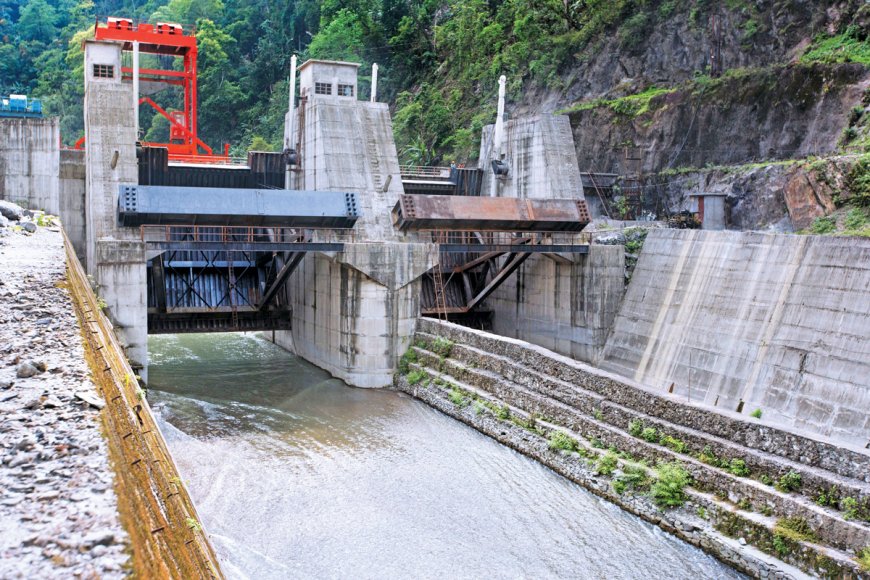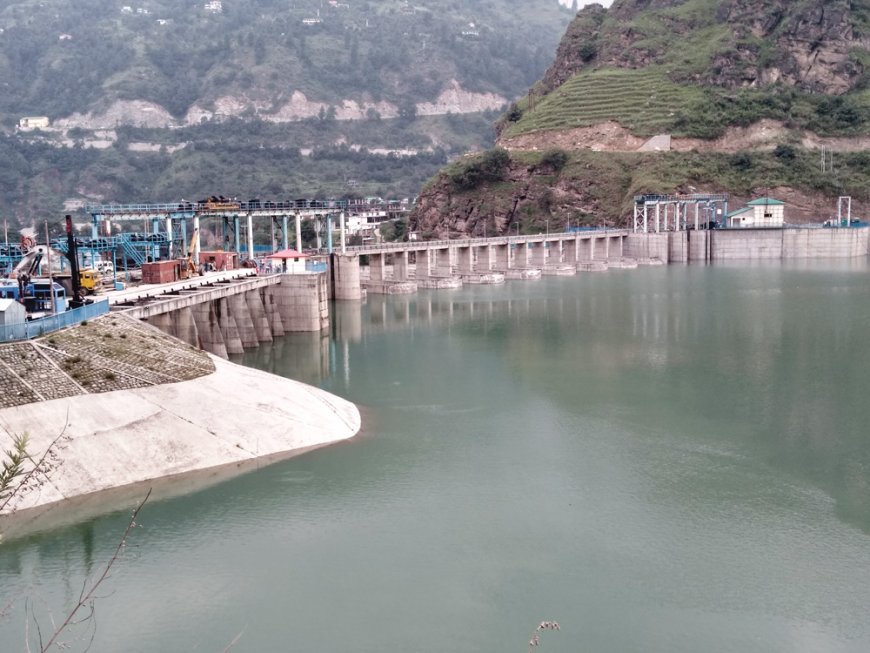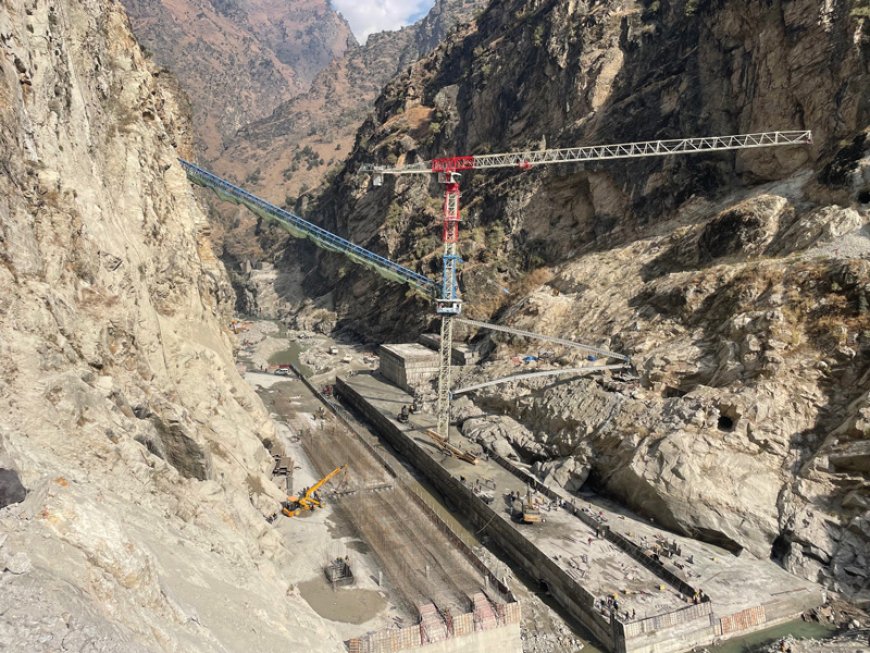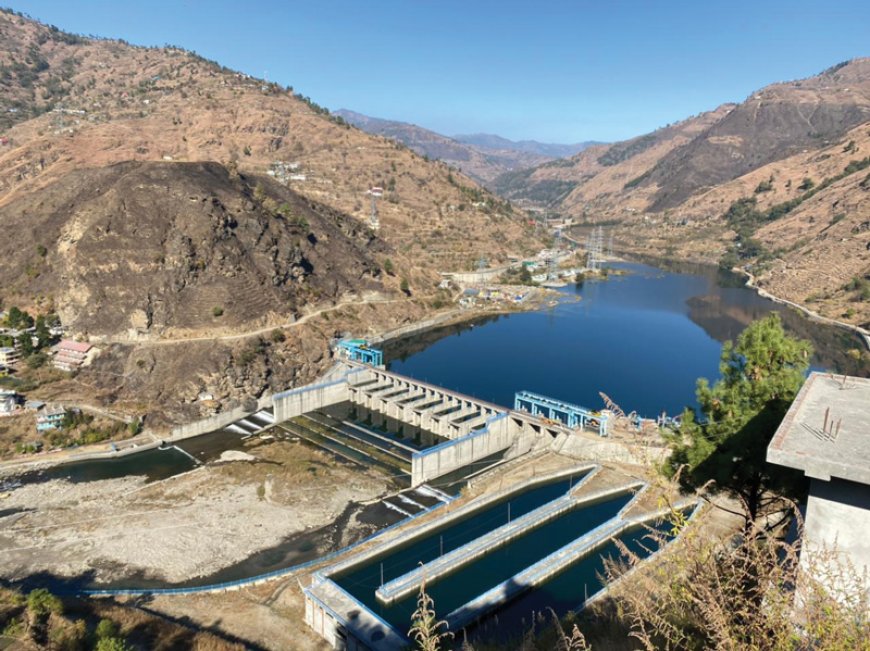We plan to participate in tenders worth over Rs 50,000-60,000 crore in FY25.
India has witnessed a transformative surge in infrastructure development, with strategic government investments and active private sector participation propelling the expansion of critical sectors. The rapid construction of highways has enhanced connectivity, smart city initiatives are modernizing urban landscapes, and significant advancements in renewable energy are driving the country towards a more sustainable future.

Kavita Shirvaikar
Managing Director, Patel Engineering Ltd
How do you assess India’s infrastructure growth and ongoing developments?
India has witnessed a transformative surge in infrastructure development, with strategic government investments and active private sector participation propelling the expansion of critical sectors. The rapid construction of highways has enhanced connectivity, smart city initiatives are modernizing urban landscapes, and significant advancements in renewable energy are driving the country towards a more sustainable future. These developments are laying a strong foundation for India’s long-term economic growth and global competitiveness.
Programs like the Gati Shakti plan and National Infrastructure Pipeline are crucial in accelerating development, enhancing connectivity, and fostering urbanization. Ongoing projects prioritize sustainability and innovation, strengthening India's position as a future global leader in infrastructure development. Infrastructure development continues to play a pivotal role in driving India's economic growth and long-term prosperity.

How is the company playing a major role in the development of India’s infrastructure?
Patel Engineering has played a vital role in India’s infrastructure, constructing hydro power plants, highways, bridges, and urban infrastructure, enhancing connectivity and improving urban living.
In India, the installed hydropower capacity is around 46,000 MW of which the company has been involved in construction of around 12,000 MW, which is 25% of the country’s installed hydropower capacity.
The company has also been involved in the construction of 87+ dams, 300+ km of tunnels, 1,200+ km of roads and has irrigated over 5,50,000 acres of land thus contributing to shaping India’s infrastructure.
The company’s advancements in irrigation and water management have boosted agricultural productivity, supported rural development, and promoted sustainable practices.
By using sustainable construction methods and advanced technologies, Patel Engineering has improved project efficiency, reduced environmental impact, and delivered cost-effective, high-quality outcomes.
Patel Engineering works with central government PSUs and state governments, combining global expertise with local growth, while strong community engagement ensures projects meet local needs and enhance social impact.

Which are the latest and upcoming projects of the company?
At Patel Engineering Limited, we continue to advance our portfolio with several pioneering projects that align with our commitment to excellence in infrastructure development. The company has been involved in certain projects of national importance, reflecting our strategic focus on innovation and sustainability.
We see an immediate opportunity of around 30,000 MW of hydropower projects having a value of over Rs 1.5 lakh crore to come up for bidding in the next one year. Additionally, we also see around 30,000 MW of pumped storage projects to be tendered in next one year.
We plan to participate in tenders worth over Rs 50,000-60,000 crore in FY25, highlighting our commitment to growth and innovation across various infrastructure domains. These projects reflect our dedication to enhancing community quality of life and promoting economic growth.
How do you look forward to the emerging opportunities in Indian infrastructure sector?
The Indian infrastructure sector is set for significant growth due to substantial government initiatives and investments in energy, transportation, and urban development.
India’s hydro potential is about 133 gigawatts, with 42-43 gigawatts harnessed so far. The next decade will see an additional 90 gigawatts, with 18 gigawatts under construction and 30-35 gigawatts upcoming for bidding. This offers major opportunities, and we expect to secure a substantial share of these projects. Further, for pumped storage projects there is a huge opportunity as more than 60 GW of PSP projects are under survey & investigation stage which shall come up for bidding in next year or two.
We are optimistic about opportunities from public-private partnerships (PPPs) and innovative financing models, crucial for addressing infrastructure challenges and ensuring project sustainability. Government support through the National Infrastructure Pipeline (NIP) with Rs 111 lakh crore and the National Monetization Pipeline (NMP) is expected to boost infrastructure development.
For irrigation - More than Rs 70,000 crore has been allocated for Jal Jeevan Mission and another Rs 9,339 crore has been allocated for Pradhan Mantri Krishi Yojna by the Centre for FY 25 in the recent budget.
For Tunnel - More than 2,500 km of tunnelling works are expected with over 800 projects.
A strong, future-focused infrastructure ecosystem requires stakeholder cooperation. Patel Engineering believes collaboration is key to overcoming challenges, implementing best practices, and creating a resilient and sustainable infrastructure environment in India.

How do you look at India as the 3rd largest construction market globally?
Considering the country's increasing development, India is the third-largest construction market in the world, driving up demand for infrastructure development in the residential, commercial, and industrial sectors.
Government initiatives, such as the Smart Cities Mission and the National Infrastructure Pipeline, are pivotal in driving large-scale construction activities and improving infrastructure nationwide.
Increased involvement from private firms and foreign investors is enhancing innovation and competitiveness within the sector, reflecting strong confidence in India’s construction potential.
Looking ahead, the ongoing and planned projects across the country position India to sustain and potentially elevate its status as a major player in the global construction market.

What is your Mission 2025 for the company?
Patel Engineering aims for around 10% revenue growth and an EBITDA margin of 14-15%. With the huge opportunities in the infrastructure sector, we expect to participate in tenders worth Rs 50,000-60,000 crore in next one year.
We expect to increase our order book by around Rs 10,000-12,000 crore in the next one year and take our balance order book to more than Rs 25,000 crore.
The company has also been reducing its debt from peak levels of Rs 5,500 crore to current levels of around Rs 1,500 crore with a debt equity ratio of 0.42. This reduction of debt has helped the company improve the bottom line as interest costs have reduced over the years. With the growing order book, we still expect to maintain our debt at similar level thus improving profitability in the coming years.

The company is committed to sustainability and innovation, implementing advanced technologies like the tower belt system which has been installed at our Kiru hydro power site, and upgrading to SAP systems to enhance efficiency, reduce costs, better project monitoring as well as reduce environmental impact.
Focused on delivering value to stakeholders, Patel Engineering plans to improve operational efficiency and community impact through enhanced construction methods and digital tools.







